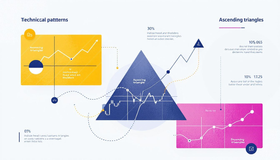What Are the Pros and Cons of Using Fidelity?
What are the advantages and disadvantages of using Fidelity, what is expense ratio, and find out the benefits.
Published April 19, 2021
Fidelity gives the chance to buy commission-free US stocks and ETFs. In addition to this, it offers plenty of high-quality research tools, including trading ideas, detailed fundamental data, and charting. The platform is easy to use and offers advanced order types. You can also trade with international stocks, not just US ones.
It is excellent for both active traders and retirement investors. Another benefit of Fidelity is that it offers fractional share investing with more than 7,000 US stocks and ETFs. This allows you to purchase smaller portions of investments at lower costs. When it comes to mutual funds, you can also invest in Fidelity's ZERO expense ratio index fund. These mutual funds require a $0 account minimum and have a 0% expense ratio. If you're not familiar with the terms, expense ratios are fixed annual fees that cover the total operating expenses of a mutual fund or ETF.
From my standpoint, the only negative I can think of is that some mutual funds have higher fees, while the margin rates are also bigger. Keep in mind that Fidelity also has relatively high fees for broker-assisted trades. Still, I recommend using Fidelity because you can be sure that it's a safe and reliable option.
Related Articles

How a Stock Watching App Can Help You Keep Track of the Market
Sofia Thai
April 29, 2021

24Option Review: Account Types, CFDs, Safety, and More
Filip Dimkovski
December 23, 2024

Best IQ Option Strategies and Tips for Success
Mia Perkins
December 22, 2024

Is Fred Trading Legit? Review of Safety and Trust
Jason Taylor
January 8, 2025

Top 10 Technical Analysis Chart Patterns for Effective Trading
Joel Taylor
January 19, 2025
